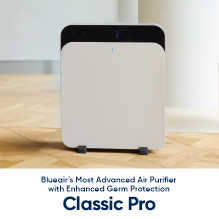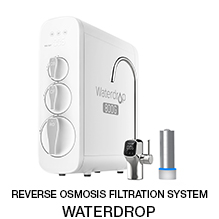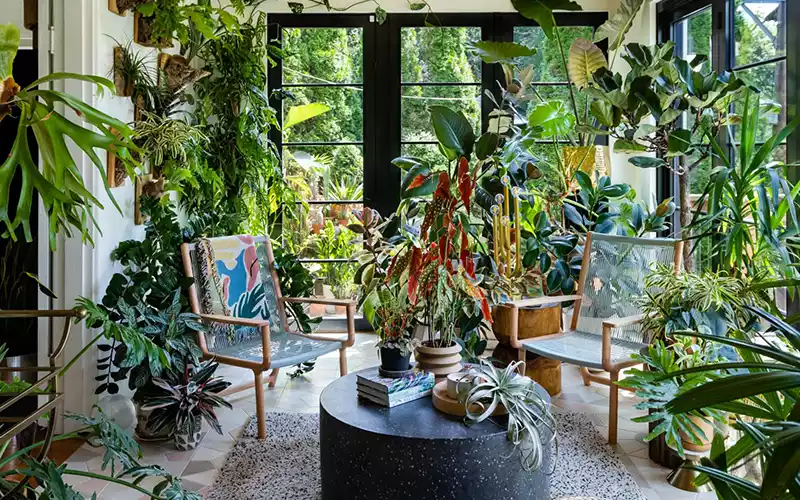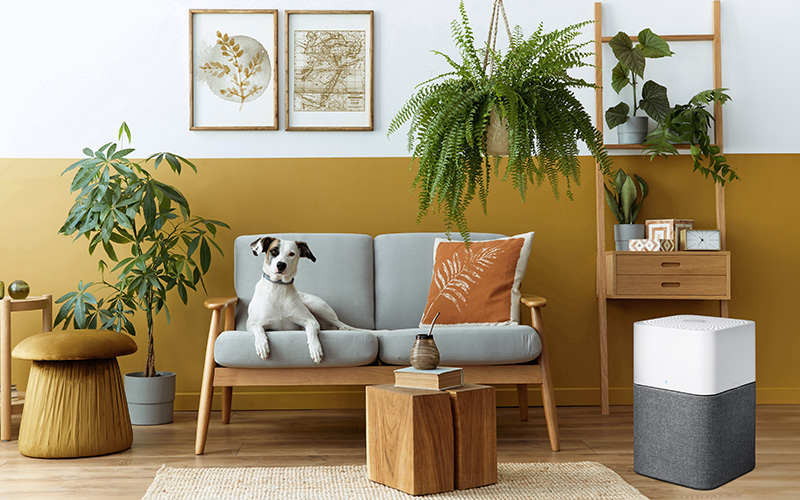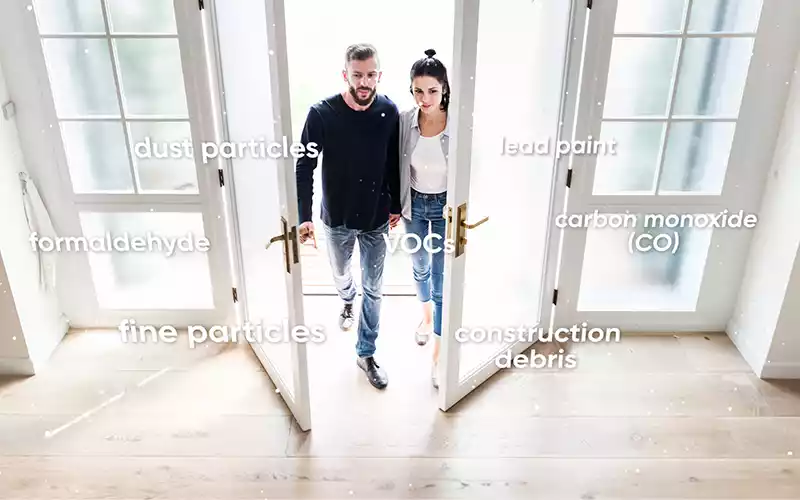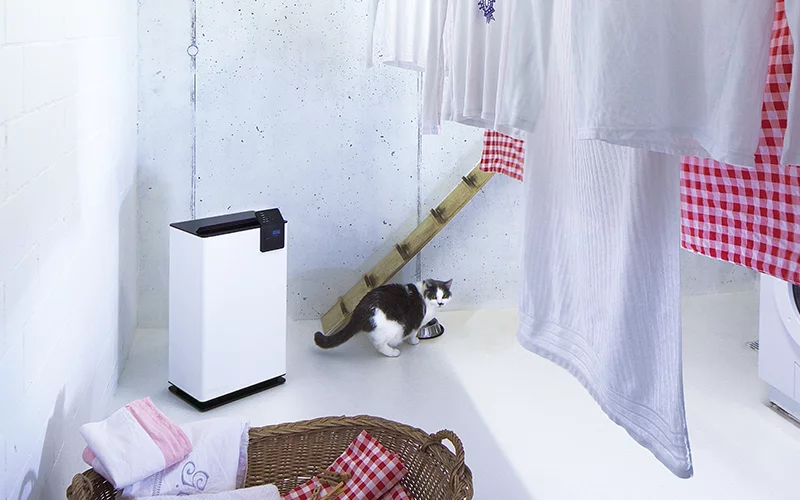Keeping indoor plants to improve air quality has been a topic of interest for many years. While some studies have shown that indoor plants can help improve indoor air quality by reducing the levels of harmful substances, other studies have found that the effectiveness of indoor plants in purifying the air varies depending on factors such as the type of plant, plant size, and quantity.
Indoor plants can add a touch of natural beauty and enhance the visual appeal of indoor spaces. By bringing nature and greenery indoors, plants can have a calming effect on people, reducing stress levels and promoting a sense of well-being. Even more so in an urban environment, indoor plants serve as a connection to nature, creating a more serene and relaxing atmosphere at home, while in parallel, studies have also shown that being in the presence of plants can help improve concentration, memory, and attention span, making them beneficial for work or study environments.
Through a process called transpiration, indoor plants release moisture which can help regulate humidity levels in enclosed spaces. It is estimated that plants release nearly 97% of the moisture they consume. This can be particularly beneficial in dry environments or during hot months where the sun is strong and the air is excessively dry. A study done by the Agricultural University of Norway showed that houseplants, when grouped together, decrease the likelihood of dry skin, common colds, and sore throats.
Keeping plants indoors can also help improve the quality of air by absorbing carbon dioxide and releasing oxygen through photosynthesis. They can also filter out toxins and pollutants present in the air, making the indoor environment healthier and fresher. Some plants are more effective than others at removing specific pollutants. For example, spider plants, snake plants, peace lilies, golden pothos, ferns, and anthuriums are some of the plants that are effective at removing formaldehyde, benzene, and other gasses from the air.
However, it is important to note that plants are primarily effective in reducing gaseous pollutants, they lack or are fairly limited in their ability to reduce airborne particles like dust, pet dander, and other microscopic particulate matter (PM1, PM2.5). Therefore, while plants can contribute to improved indoor air quality, they should not be relied upon as the sole solution.
Other measures such as proper ventilation, minimizing pollutant sources, and maintaining a clean living environment are also essential for maintaining good indoor air quality.
Air purifiers with high-efficiency particulate arrestance (HEPA) and activated carbon filters such as the award winning Blue from Blueair can also be considered as part of a multi-pronged solution to improving the quality of air indoors. Performance metrics such as Clean Air Delivery Rate (CADR) is an important factor to consider when selecting an air purifier. CADR ensures that the air purifier you choose for your room is effective in cleaning the air of harmful particles. For example the Blue 3610 is tested by the Association of Home Appliance Manufacturers (AHAM US) every quarter and is rated to produce a high CADR of 590m3 per hour. When placed in a 51m2 room, the Blue 3610 is capable of cleaning the entire volume of air in the room 5x every hour to ensure that you breathe air that is clean, fresh, and free from harmful gasses and particles. Professor Michael Waring of Drexel University’s Environmental Engineering Department analysed 30 years of past research and concluded that plants remove VOCs (volatile organic compounds) at such a slow rate that you would need lots of plants to make the same impact as an air purifier. His research determined a houseplant's CADR as less than one m3 per hour, which roughly equates to between 10 and 10,000 plants per square meter just to reach the average indoor air exchange rate.
Incorporating indoor plants into your home or office can bring immense pleasure and numerous benefits. Sharing your living or working space with vibrant, living, and "breathing" plant life not only creates a happier and healthier environment but also adds a touch of natural beauty. While it is important to be realistic about their air cleaning capabilities, indoor plants still make a positive impact on indoor air quality. By combining the presence of indoor plants with other measures like proper ventilation, pollutant reduction, and maintaining cleanliness, you can enjoy the refreshing and revitalizing atmosphere that indoor greenery brings. As part of a comprehensive approach to improving indoor air quality, consider investing in air purifiers equipped with HEPA and activated carbon filters, such as the Blue 3610 air purifier. With a capability of delivering 5 clean air exchanges every hour, the Blue 3610 effectively captures airborne particles and adsorbs harmful gasses to rapidly enhance the air quality in your space, complementing the benefits provided by indoor plants. So, embrace the joy of having indoor plants and the added support of air purifiers like the Blue 3610, and breathe in the fresh, clean air they collectively provide!
|
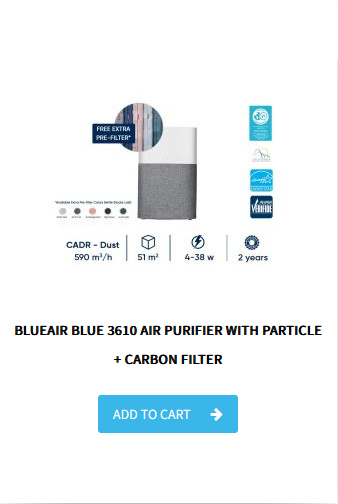 | 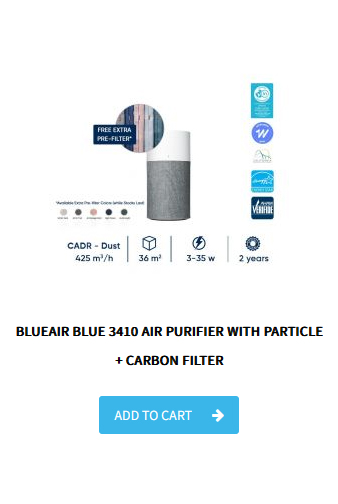 |
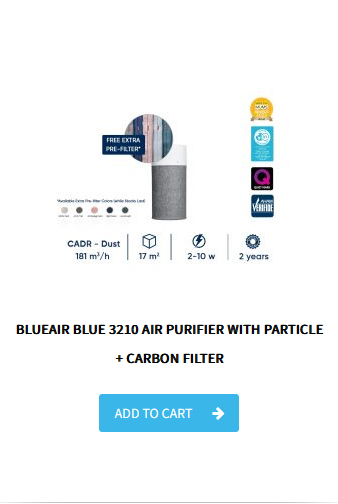 | |

